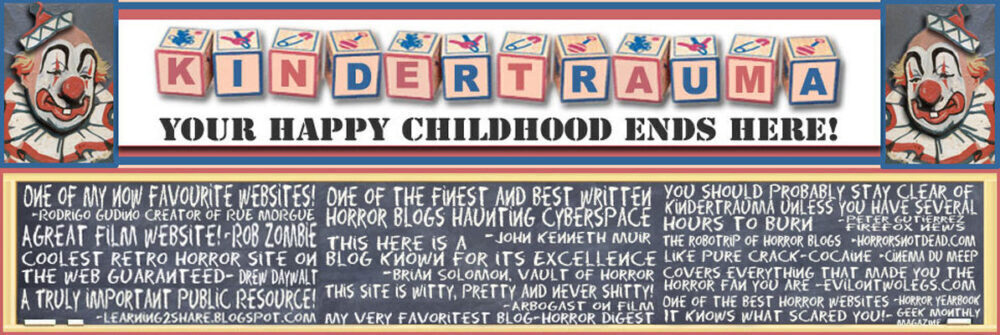
There were a lot of horror films that deeply affected me as a child. One of my earliest film-going remembrances was the time my father took me to see the original PLANET OF THE APES (1968) on its first theatrical release. The problem was is that we arrived a bit too early, and we caught the film's big shock ending … CHARLTON HESTON rides up on the beach with his cave woman girlfriend to see the remnants of the Statue of Liberty and we learn that this so-called "alien planet" is in fact the planet Earth after some unspecified holocaust. As a child of eight, I was only vaguely aware of the nuclear threat at this time, and I was suitably unnerved by this final image. CHUCK HESTON's histrionics notwithstanding ("He's screaming and wailing – just like your mother!" my dad pointed out, laughing), I begged out of watching PLANET and we departed after seeing the considerably milder second feature, THE WATERMELON MAN.
The fact that the world could go up in particulate matter with the press of a button would be explored further in the PLANET OF THE APES sequel, BENEATH THE PLANET OF THE APES (1969), educating countless school kids about the insecure status of humanity in the postwar world in a succession of G-rated installments.
One other film that clued me in to the haunting finality of death, nuclear or otherwise, was the first adaptation of RICHARD MATHESON's "I Am Legend," THE LAST MAN ON EARTH (1964). VINCENT PRICE is seemingly the only human being left on the planet after a mysterious plague sweeps the world, transforming other survivors into vampires. PRICE barricades himself in his suburban home (supposed to be in Los Angeles, but shot in Rome – giving the film an even more off-kilter flavor), while at night the undead hordes call out to him to join them – stark shots of black-and-white terror that could be dropped wholesale into GEORGE A. ROMERO's NIGHT OF THE LIVING DEAD (1968) without the slightest trace of continuity error.
Two scenes in LAST MAN chilled me to the bone, and continue to do so – those who denigrated this film, which included VINCENT PRICE and RICHARD MATHESON, fail to grasp the power this strange film still wields. PRICE loses his young daughter to the plague, and bodies are tossed into a giant fiery pit at the edge of town in an effort to control the pestilence. PRICE tries to spare his daughter an anonymous burial (remember, the Holocaust was still very recent when this was filmed, and filmed in Europe), he is pushed aside by an impatient government worker who says, "There are a lot of daughters down there – including mine!" Never had the Apocalypse been rendered with such blunt, unsympathetic words to my then-tender ears.
The second scene has VINCENT PRICE discovering a bedraggled poodle and he is momentarily cheered with the prospect of a companion to ride out his lonely solitude with – until, of course, he examines the dog's blood to see that the poodle has the vampire virus, and he collapses in mirthless, bitter laughter. The next scene has PRICE burying the poodle, stake through the heart in his back yard, which should be hysterically funny – but just isn't.
The message to my young mind was absolutely clear. Death, the ultimate monster, strikes little girls and poodles just as cold and merciless as anyone else, including grown-ups. Furthermore, adults had all the cards in their favor – they could push a button and wipe out humanity, draft young men to fight in foreign wars to die in battle or consign their own children to fiery, bottomless pits with a brisk, bureaucratic efficiency.
I wish there was a heartwarming or reassuring thing to share about this monster kid memory, but there isn't any. This horror film had fulfilled its obligation of engaging me, thrilling me and introducing me to certain truths that my own parents, at that time, were themselves too terrified to tell.


AUNT JOHN SEZ: Thanks for the traumafession Greg! To read more by Greg Goodsell, be sure to check out both SCREEM MAGAZINE and ANGELS IN DISTRESS.





















